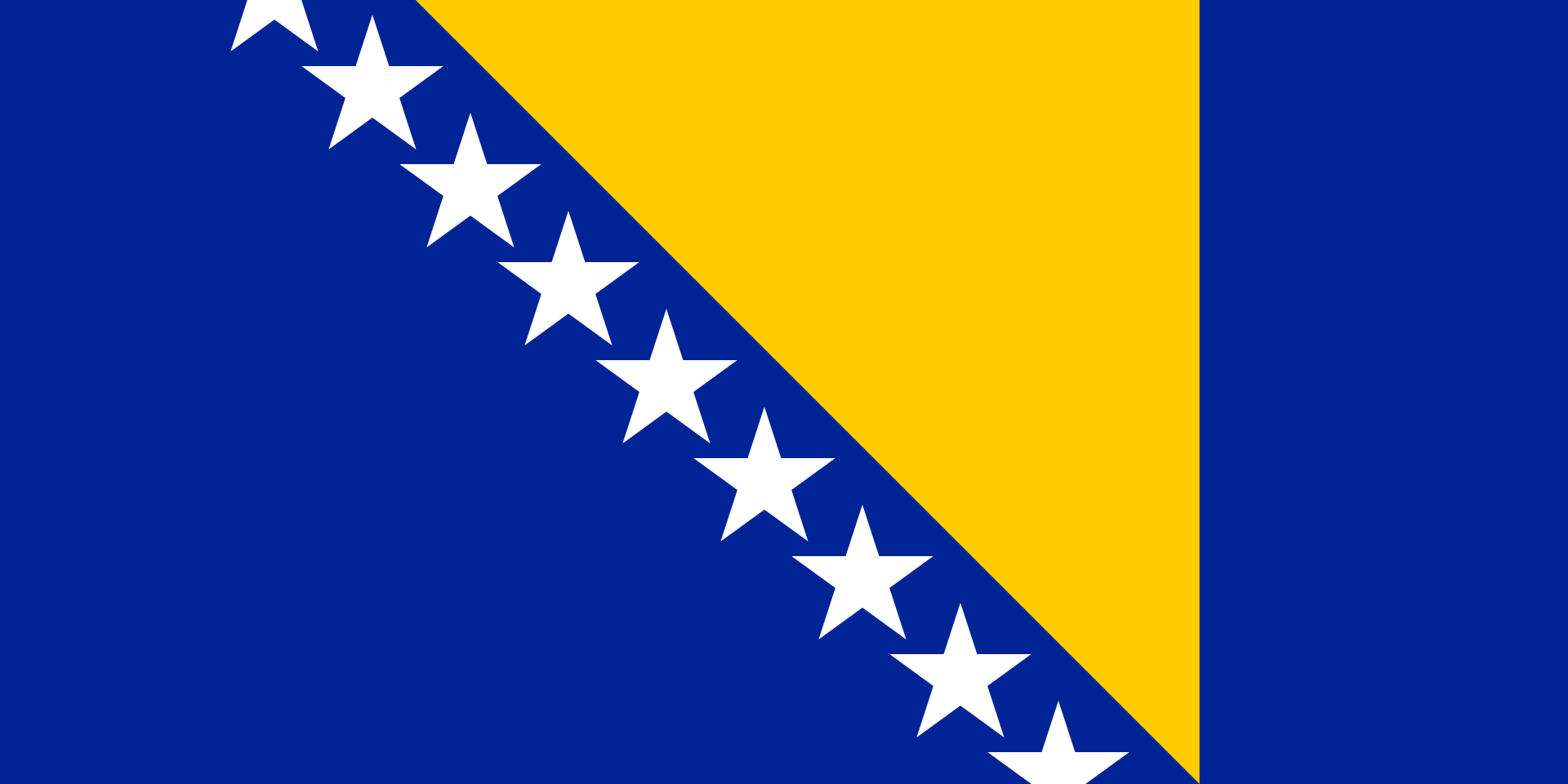The flag of Bosnia and Herzegovina is a modern and unique design that symbolizes the country’s complex history and commitment to a unified future. The current flag was adopted on February 4, 1998, following the Bosnian War and the Dayton Peace Agreement, which sought to create a symbol that represented all ethnic groups within the country.
Design and Elements
- Main Colors: Blue, yellow, and white.
- Blue Field: The background of the flag is a blue field that covers the majority of the flag.
- Yellow Triangle: A large yellow right triangle sits along the hoist side (left side of the flag), pointing to the upper fly side. The triangle represents the shape of Bosnia and Herzegovina and symbolizes the three main ethnic groups: Bosniaks, Croats, and Serbs.
- White Stars: A diagonal line of white five-pointed stars runs along the hypotenuse of the triangle, stretching from the top edge of the flag to the bottom. The stars are cut off at the edges, creating an effect of continuity, which symbolizes the infinite aspiration of the country towards peace and integration with Europe.
Symbolism
- Blue Background: Represents peace, as well as a connection to the European Union, reflecting Bosnia and Herzegovina’s aspirations toward European integration.
- Yellow Triangle: Symbolizes the territorial integrity of Bosnia and Herzegovina and the three major ethnic groups within the country.
- White Stars: The stars symbolize Europe and are placed in a way that suggests infinity, highlighting the country’s commitment to an enduring peace.
Proportions
- The flag’s standard proportions are 1:2, meaning it is twice as long as it is tall.
Historical Context
- The flag was designed as part of the peace-building efforts after the Bosnian War (1992-1995) and aimed to create a neutral and inclusive national symbol that represented all citizens of Bosnia and Herzegovina, regardless of ethnicity or religion.
- It replaced the previous flag used during the war, which was seen as too closely associated with one group.
The flag of Bosnia and Herzegovina is thus a symbol of unity, peace, and the desire for integration with the broader European community, while also reflecting the country’s diverse and complex cultural landscape.
